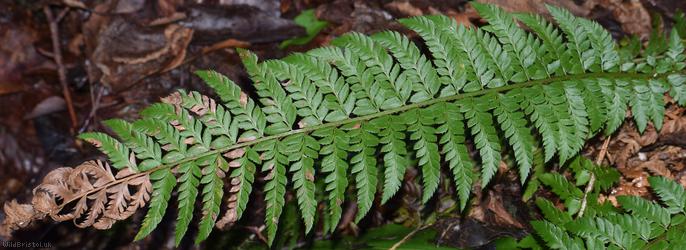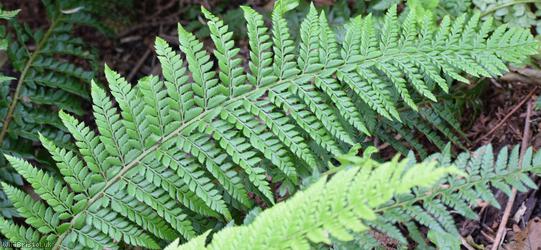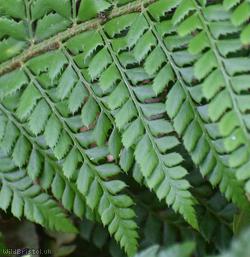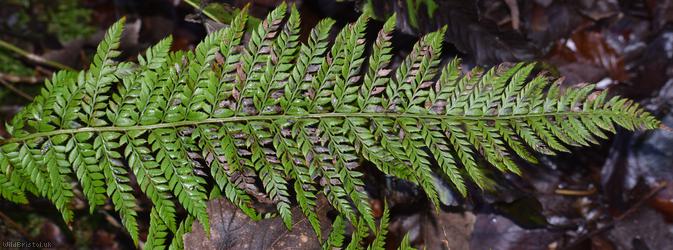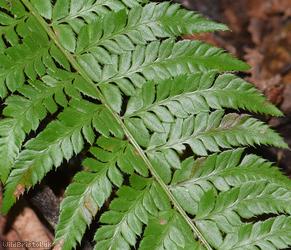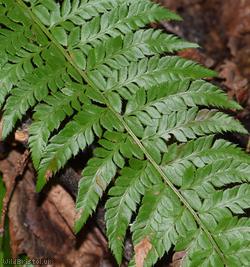Hard Shield-fern - Polystichum aculeatum
Favourite Photos
Species Description
Widespread and fairly frequent throughout the UK but mainly in the North and absent from much of the South and East. Habitat includes: Thin, damp, mildly acidic to base-rich soils in places such as mountain gorges, steep wooded river, rock faces, grikes of limestone pavement, shady mortared walls, hedge-banks, around cave entrances and mine shafts etc. It is rarely plentiful in Southern England, usually occurring as scattered individuals. Growing habit: Evergreen Perennial.
Stace 4:
Polystichum aculeatum (L.) Roth - Hard Shield-fern.
Leaves to 1m (including petiole much shorter than blade), 1-2-pinnate, rather hard in texture; pinnules sessile, their blades acute-angled at base with the edge nearer the leaf rachis at an acute angle to the pinna rachis; 2n=164. Native; similar places to P. setiferum but more upland and northern; frequent in Britain and Ireland, common in North & West Britain but less common than P. setiferum in South West England and South Wales. Juvenile plants are often very similar to mature ones of P. lonchitis, but lack sori.
Key:
- Leaves 1-pinnate with deeply lobed pinnae to 2-(3)-pinnate
- Lowest pinnae about 1/2 as long as longest pinnae; proximal pinnules on each pinna sessile or pinnules not even differentiated, with a blade acute-angled at base
